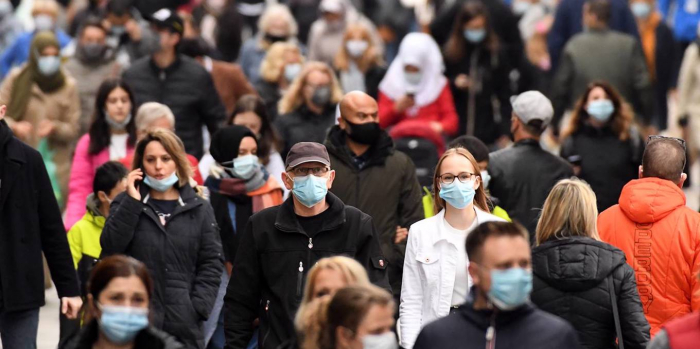From an economic perspective, the COVID-19 crisis has so far played out much better than feared for more vulnerable segments of society. Initial job and earnings losses were cushioned by generous state support, and the vigorous recovery is leading to much improved employment prospects for many.
During the acute phase of the COVID-19 pandemic in the spring of 2020, when a large part of the population was locked down at home, the economy fell into a deep recession that hit the unskilled and minorities particularly hard. Moreover, in contrast to previous downturns, the job losses were concentrated in sectors with a high proportion of female workers, justifying the term “shecession.”
The first indications, therefore, were that the fallout from the pandemic would exacerbate inequality. But the subsequent two years have provided signs that this is not necessarily the case.
For starters, the direct impact of actual or potential job losses on people’s income was offset in most developed countries by unprecedented government support. In the United States, this assistance took the form of checks mailed directly to millions of households. In Europe, most governments financed massive short-term schemes, under which the state footed the bill for firms to retain furloughed workers.
These measures meant that initial pandemic-induced job losses did not lead to lower incomes. And those most likely to lose their jobs were also the most likely to receive generous government support.
As a result, inequality indicators that are based on disposable income – that is, total income after accounting for taxes and government transfers – did not deteriorate, and even improved slightly in some cases. The most widely accepted gauge of income inequality is the so-called Gini coefficient, which measures how far the observed income distribution diverges from perfect egalitarianism. In the US, the coefficient remained very high in 2020, but it did not increase further.
The pattern is similar in Europe, with one study even finding that income inequality fell from January 2020 to January 2021 in the European Union’s four largest economies – Germany, France, Italy, and Spain. According to another study, although inequality would have increased considerably without government action, both the Gini index and the official EU risk of poverty indicator show that targeted state support programs neutralized this initial impact.
This outcome highlights how the state can perform its role of insurer of last resort by protecting vulnerable groups from an unexpected economic shock of unprecedented magnitude. But governments are now winding down COVID-19 support schemes as the recovery proceeds, albeit somewhat more gradually in Europe than in the US, where the rebound is more complete. Does this mean that the pre-pandemic trend toward increasing inequality will resume?
Again, initial indications are that the opposite may be true, and that previous inequality patterns might be reversed in the post-pandemic world. The “shecession” turned out to be a short-lived phenomenon, with most job losses that affected women lasting only a quarter or two. Another encouraging sign is that the wage share – the share of total output that is paid to employees – increased in 2020 and in 2021.
The wage share had been falling for a long time, fostering a raft of explanations. But the recent recovery seems natural: There are currently too few workers to operate the existing capital stock. “Build back better” is a misnomer. COVID-19 lockdowns did not destroy any capital, but merely rendered it idle for a short period. The recovery thus does not require new capital, only a redeployment of what was already available.
But there is now less labor available than before because of what US commentators have called the “Great Resignation,” which has effectively reduced the workforce, or rather the share of the adult population willing to work at previous wage levels. Firms must offer higher wages to attract the workers they need to increase production.
In Europe, labor markets are less dynamic, but resignations are increasing in most EU member countries even as substantial pockets of unemployment remain. And the greater need for workers is likely to persist for some time. The pandemic has accelerated pre-existing trends that in the very long run might reduce the demand for low-skilled workers in particular, but in the short to medium term will likely have the opposite effect.
For example, online shopping, which used to be marginal in most parts of Europe, is now rapidly gaining in popularity everywhere. As a result, many of the goods that we previously put in real-life shopping carts, stuffed into bags, and carried home are now collected, packaged, transported, and delivered by others, who need to be paid for their time and effort.
Most of these new roles are low-skilled, and might be performed in the distant future by robots, self-driving delivery vans, or drones. But because last-mile delivery still requires humans for now, the jobs outlook for the unskilled looks much better than before.
Similarly, a few years ago, some pundits were predicting a world where robots would do much of the work. Truck drivers, for example, would supposedly be rendered unemployed by self-driving vehicles. But today, a lack of drivers is one of the factors slowing the industrial sector’s recovery from the pandemic.
From an economic perspective, then, the COVID-19 crisis has so far played out much better than feared for the more vulnerable segments of society. Initial job and earnings losses were cushioned by generous state support, and the vigorous recovery is leading to much improved employment prospects for many. As the pandemic enters its third year, that at least should provide some grounds for optimism.
Daniel Gros is a member of the board and a distinguished fellow at the Centre for European Policy Studies.
More about:
















































